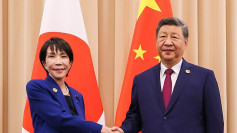China's bond market, one of the world's largest, is facing significant turmoil as the People's Bank of China (PBOC) intensifies efforts to control an unexpected surge in bond buying. This spike in activity has driven long-term government bond yields to historic lows, reflecting investor anxiety over the country's slowing economic growth and deflationary pressures. The central bank's interventions underscore the delicate balance Beijing must maintain between stimulating the economy and preventing market instability.
In recent weeks, the yield on China's 10-year government bond, which moves inversely to its price, hit a record low of 2.0913% before a modest rebound to 2.2484%. However, by mid-week, the yield had again drifted downward, highlighting the challenge for Chinese authorities in stabilizing the market. The PBOC has been actively working to curb what it sees as irrational exuberance in the bond market, where investors have flocked to government bonds as a safe haven amid a dimming economic outlook.
The central bank's concern stems from the potential risks of a bond market bubble, which could lead to sudden and severe corrections if investor sentiment shifts. The PBOC's efforts to rein in speculative activity have included direct market interventions, warnings through state-affiliated media, and investigations into regional banks suspected of manipulating bond prices. Despite these measures, yields have continued to fall, driven by a combination of weak stock market performance, declining property values, and the overall lack of attractive investment alternatives.
On Wednesday, the Financial News, a publication linked to the PBOC, reported that the central bank's efforts to elevate long-term interest rates had been somewhat effective, with experts noting an increase in government bond supplies and a reduction in short-term speculative trading. However, the publication acknowledged that maintaining an upward-sloping yield curve-a crucial indicator of a healthy economy-remains a significant challenge.
The PBOC's interventions have been multifaceted. Last week, the National Association of Financial Market Institutional Investors announced a "self-disciplinary investigation" into four regional banks, accusing them of manipulating the secondary market prices of treasury bonds. The central bank has also been rumored to have discouraged some commercial banks from following through on bond purchases, a move that reflects the authorities' growing unease with the current market dynamics.
These actions come against a backdrop of broader economic concerns in China. The country's economic growth has slowed, prompting the central bank to cut short-term interest rates to stimulate activity. However, this has only exacerbated the rush into long-term government bonds, as investors seek safe, yield-generating assets in a market with few appealing alternatives.
"The PBOC is using an unusual measure, but its intention is pretty clear: Our defense [of interest rates] is serious," said Wei He, a China economist at Gavekal Dragonomics. Despite the central bank's efforts, many market participants believe that the downward pressure on yields will persist as long as economic growth remains sluggish and inflationary pressures are subdued.
The situation is further complicated by the actions of so-called "bond vigilantes," a term used to describe activist traders who move aggressively in the bond market to force policy changes. These traders have increasingly tested the PBOC's resolve, betting that the central bank will eventually have to ease its grip on the market to prevent a broader economic slowdown.
Foreign investors, meanwhile, continue to see opportunities in the Chinese bond market, holding approximately 2.21 trillion yuan ($310 billion) worth of government bonds as of June. "From a trading perspective, it's going to be difficult for [government bond yields] to go up unless Chinese growth reaccelerates and inflation accelerates," said Ben Bennett, head of investment strategy for Asia at Legal & General Investment Management. He added that the market's current dynamics create a "carry trade" environment, where investors can profit from the difference between short- and long-term interest rates.






